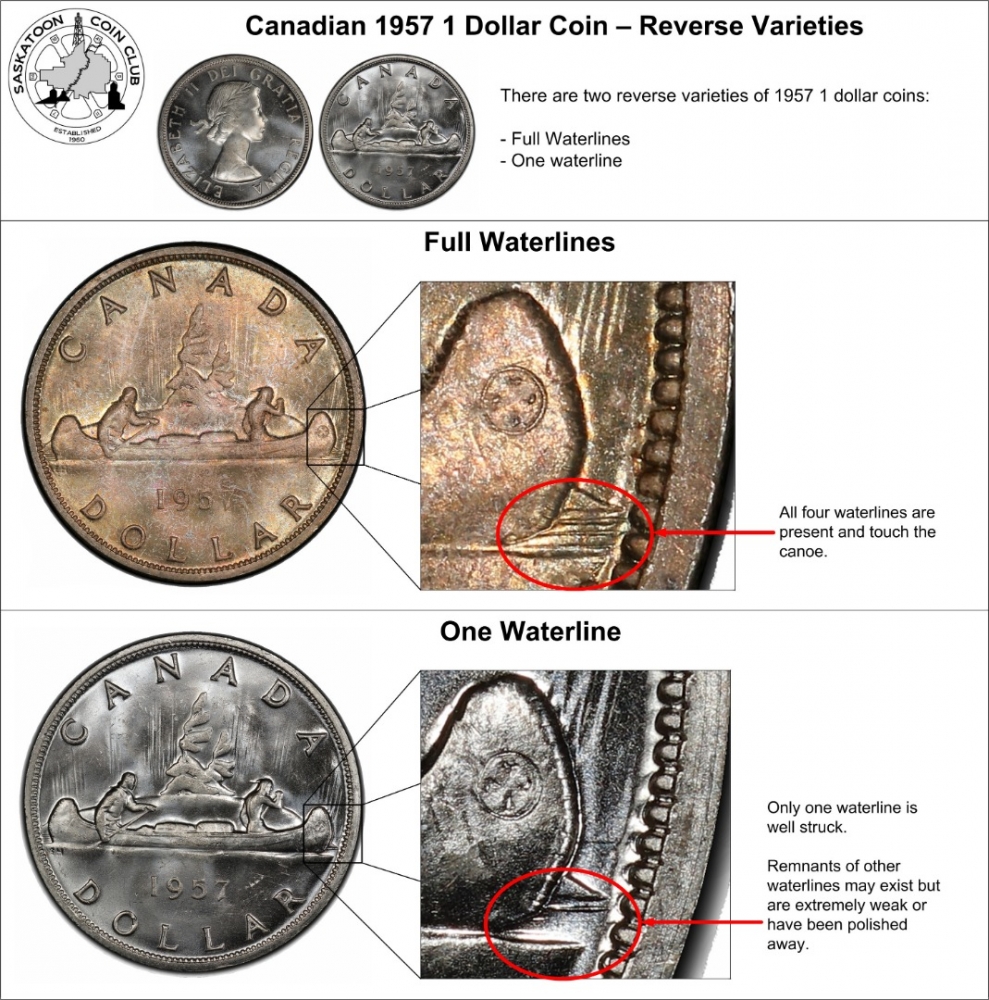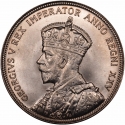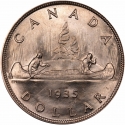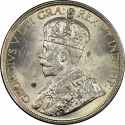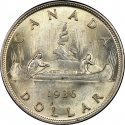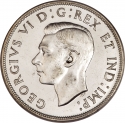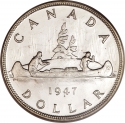You are about to finish your registration. Please check your mailbox (including spam folder). There should be a letter with a confirmation link. Check setting to make sure that your e-mail address is correct.
Send letter againDescription
Varieties
• 1953 obverse: An element that was common on every denomination of 1953 was the two obverses that existed. Said obverses are commonly identified as the No Shoulder Fold and the Shoulder Fold. The coinage for the year featured the new effigy of Queen Elizabeth II. The sculptress was Mrs. Mary Gillick and she created a model with a relief that was too high. The centre portion of the effigy was to feature two lines on the shoulder. These lines were supposed to represent a fold in the Queen's gown. As these lines did not appear very well, it was commonly termed the No Shoulder Strap by many collectors. Later on in the year, the Royal Canadian Mint's Chief engraver Thomas Shingles lowered the relief of the model and strengthened the shoulder and hair details. This modified obverse became known as the Shoulder Strap variety.
• 1955 reverse: In December 1955, the Royal Canadian Mint made up an order of 2,000 silver dollars for a firm in Arnprior, Ontario. These coins had 2 and ½ water lines at the right end of the canoe. The 1955 dollars caught the interest of many collectors and it was this version that led to the term Arnprior being applied to any dollar with an appearance of missing water lines. An even more collectable of the 1955 Arnprior, is given by the die break on the obverse legend, with the result being the joining of the T and the I in GRATIA.
• 1957 reverse: The Arnprior type configurations tended to consist of 2 and ½ water lines at the right. Any trace of the bottom waterline disqualified a coin from being considered an Arnprior type.
Obverse

|
First portrait of HM Queen Elizabeth II (laureate bust) facing right, wearing a wreath. It was introduced in 1953, one year after the Queen acceded to the throne. It captures the grace and youth of the 26-year-old new Queen. Her hair is restrained by a laureate crown which is tied with ribbons at the back of her head. The Queen's shoulders are bare and the truncation follows the curve of the coin. The engravers initials M.G. are incuse, generally faint, and are located on the raised edge found at the base of the bust. ELIZABETH II DEI GRATIA REGINA |
|---|---|
Reverse

|
A voyageur and an aboriginal travelling by canoe, carrying bundles of which one bears the initials "HB" for Hudson's Bay Company, are surrounded with the facial value and the inscription "CANADA". CANADA |
| Edge |



